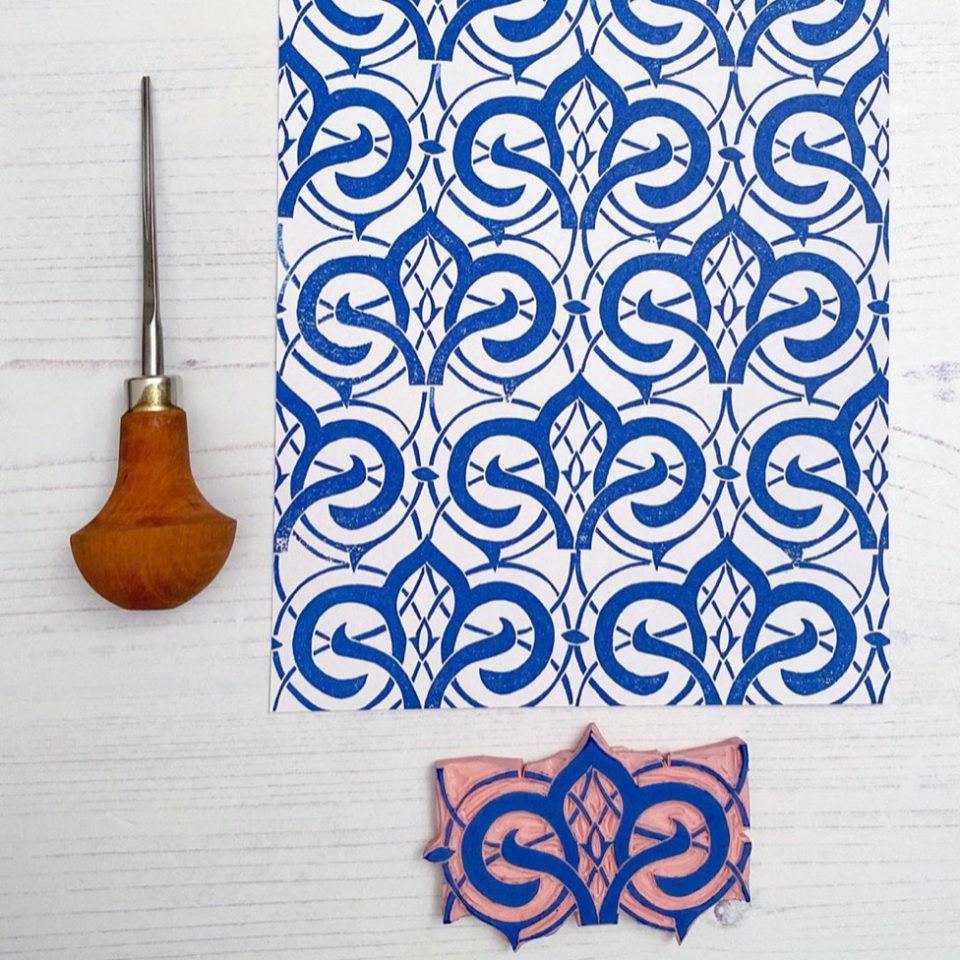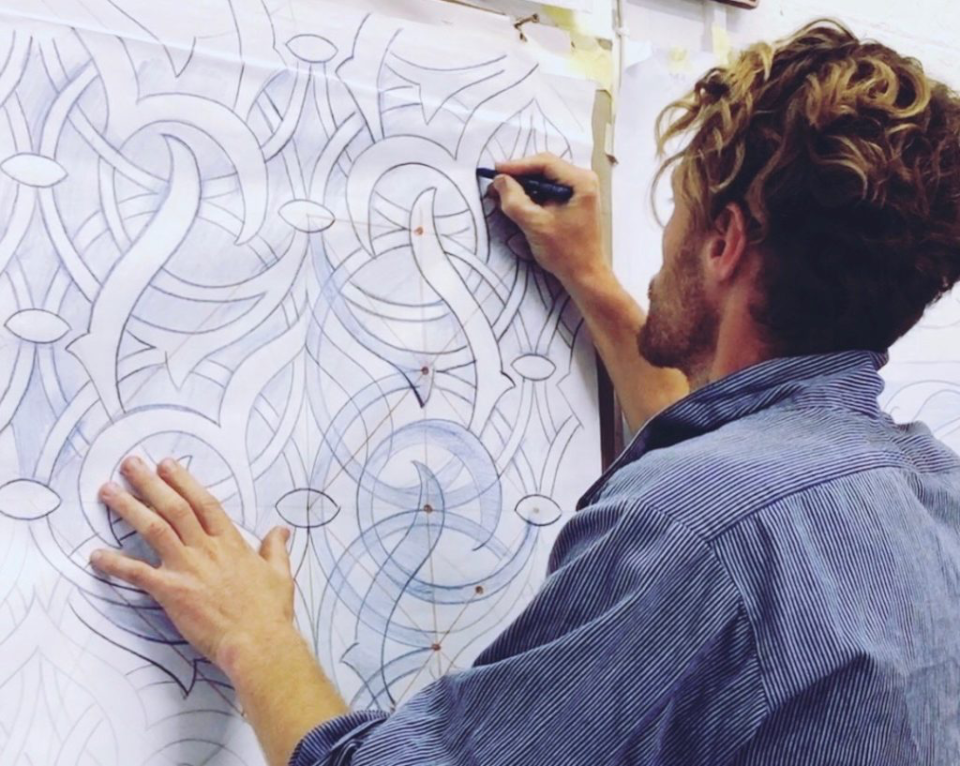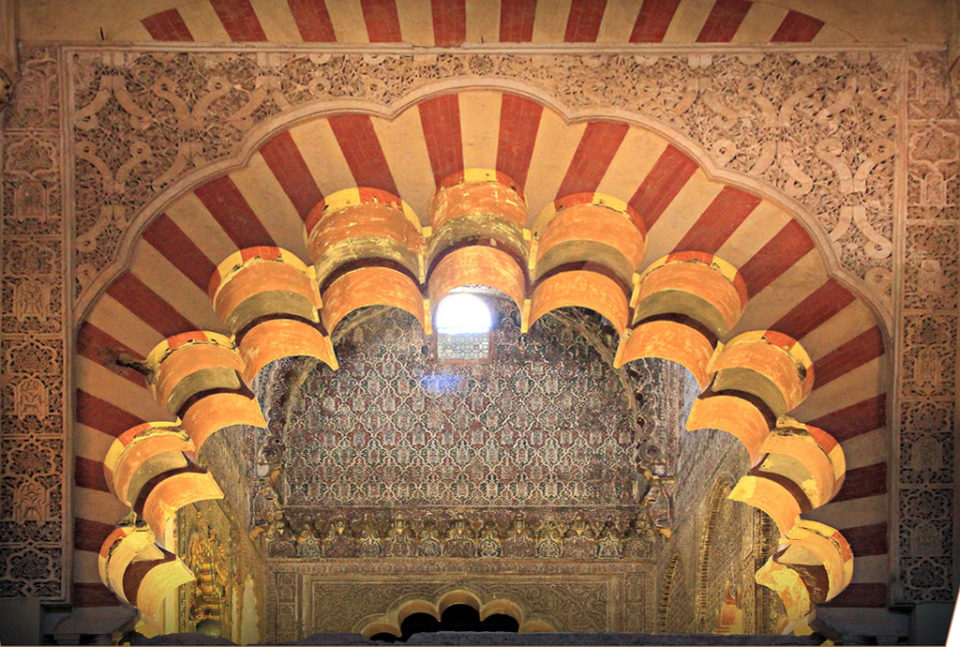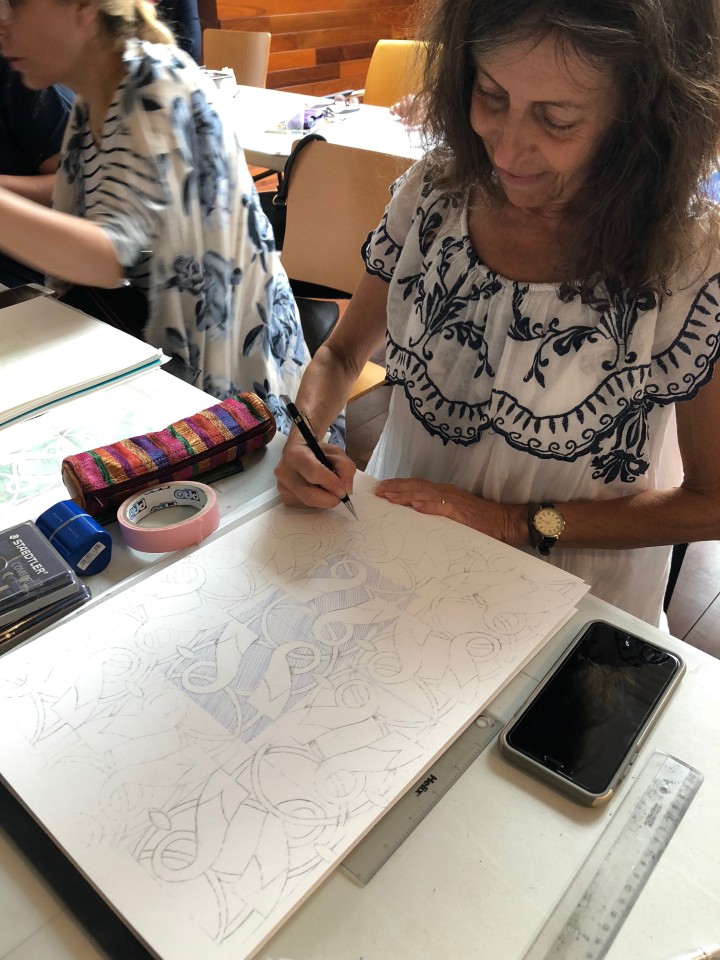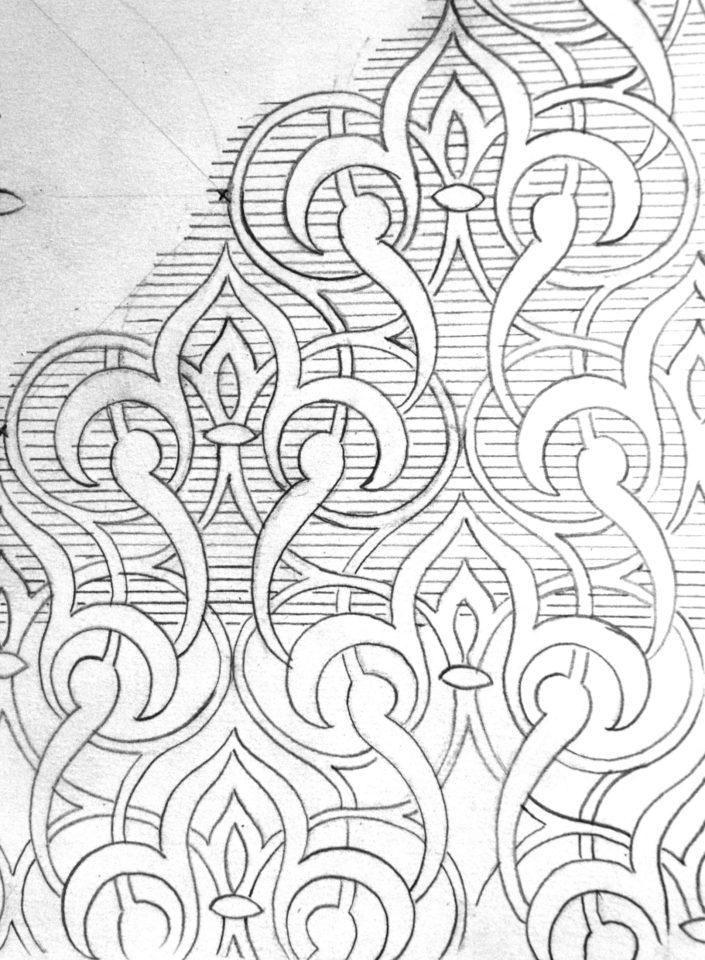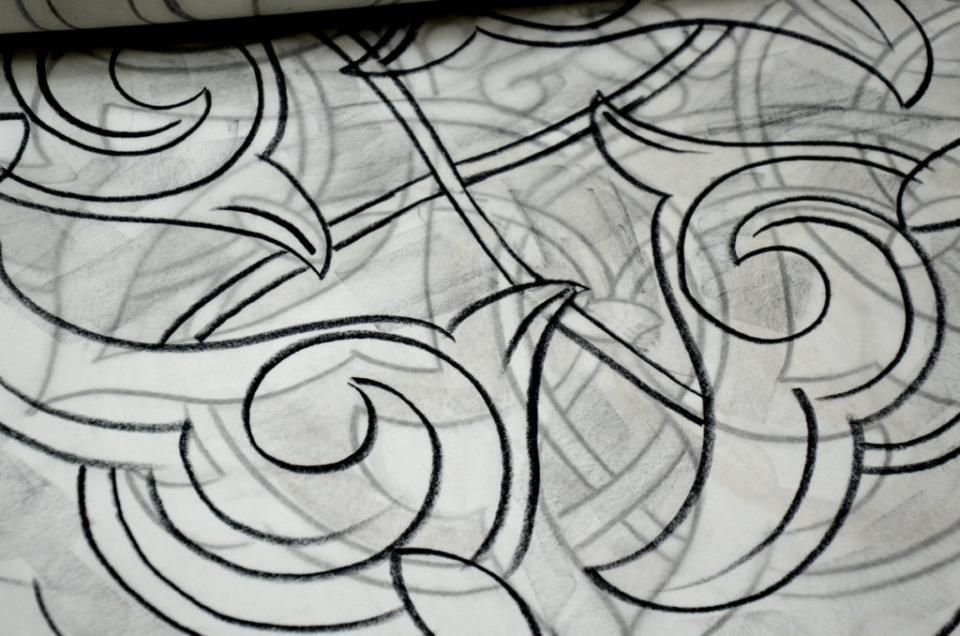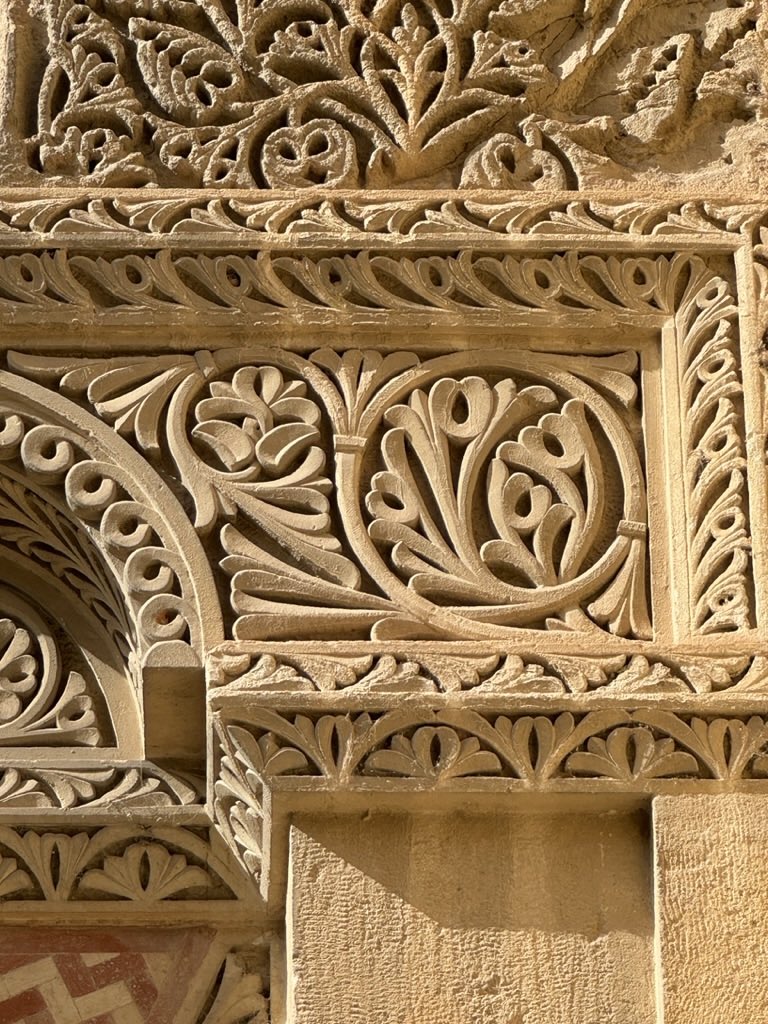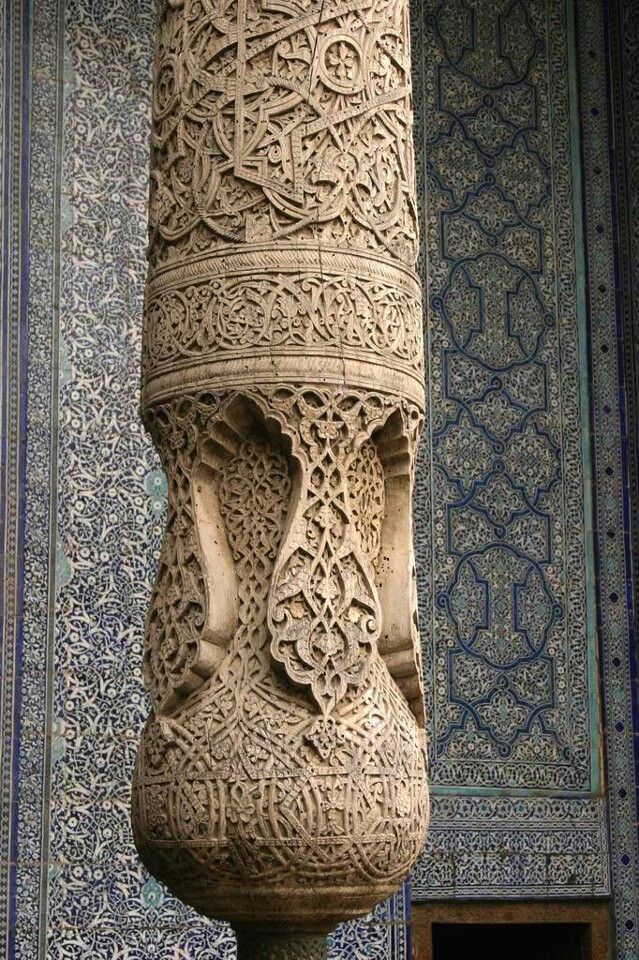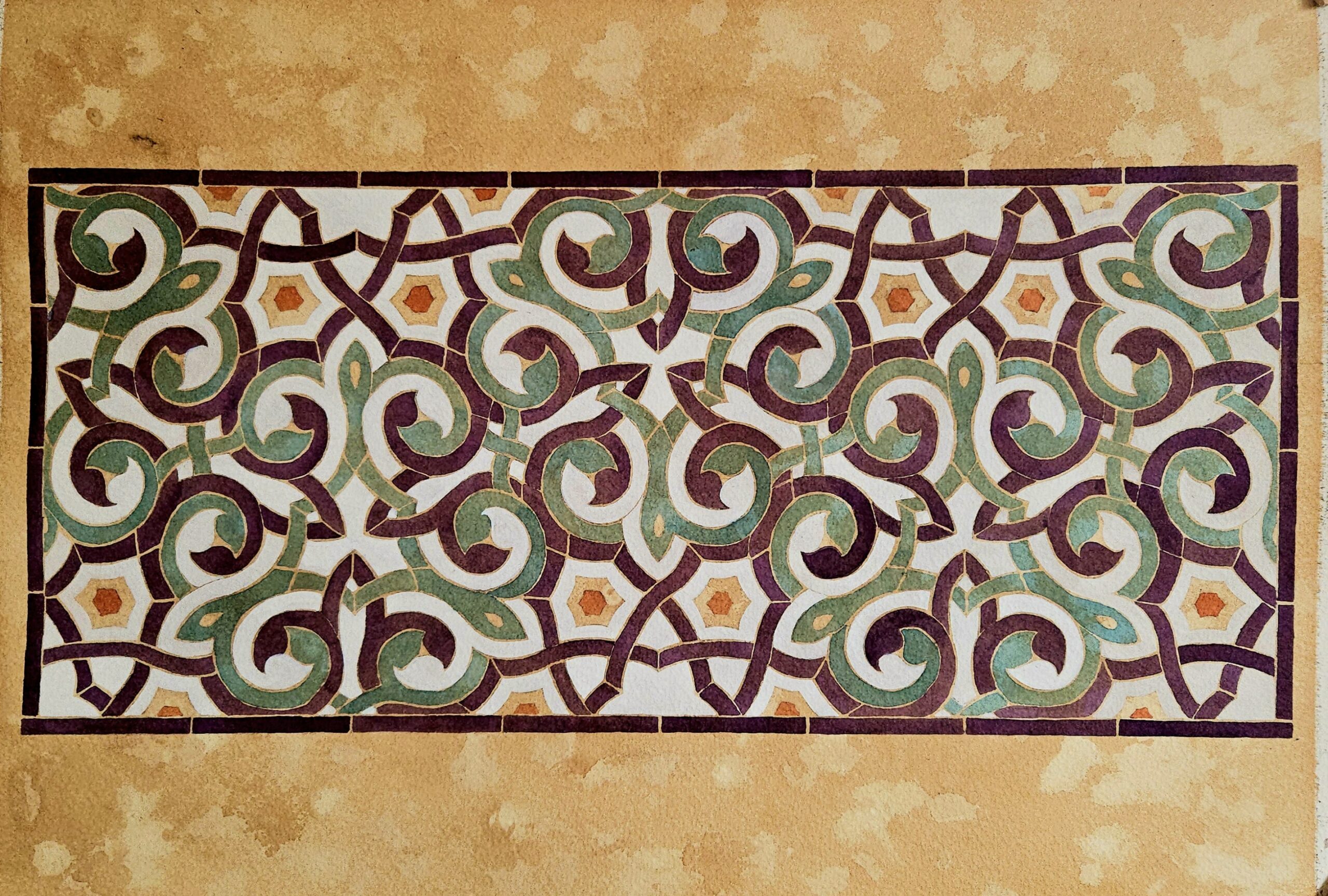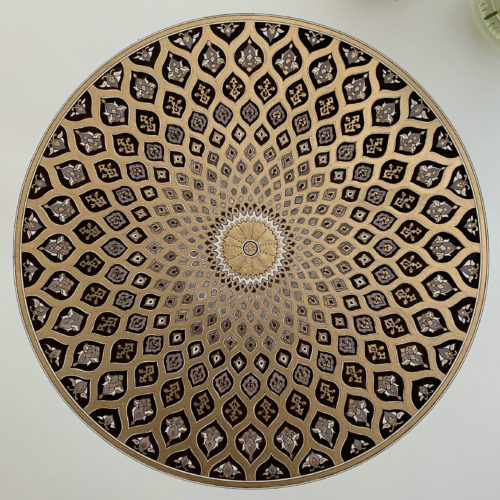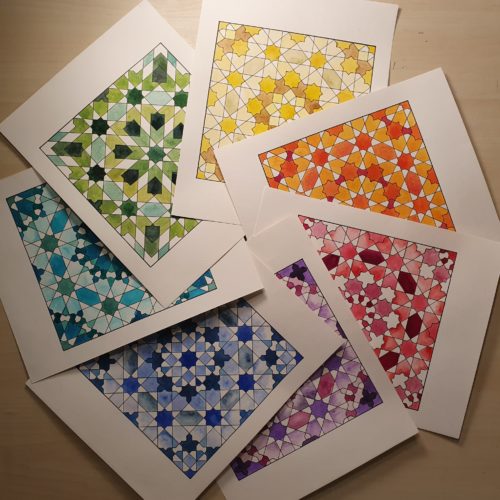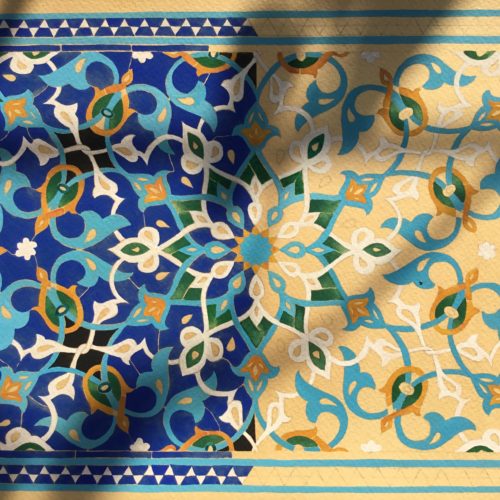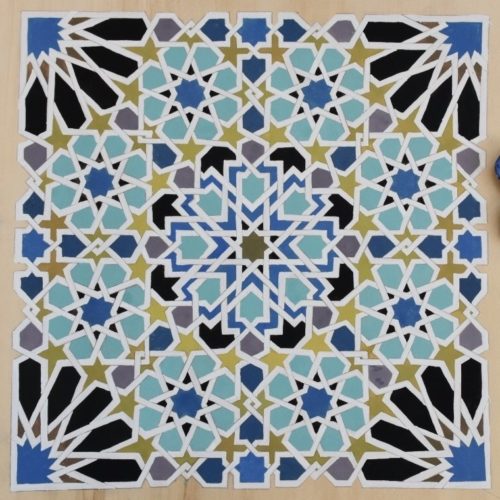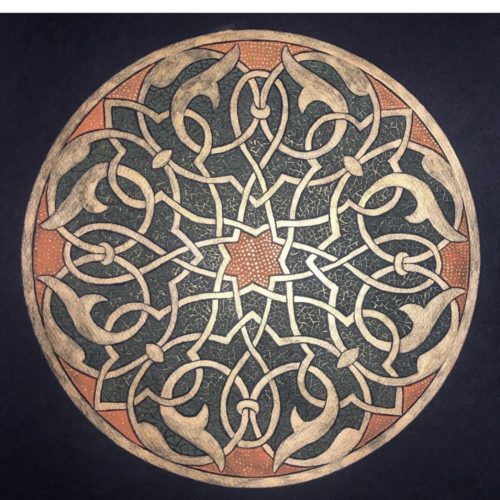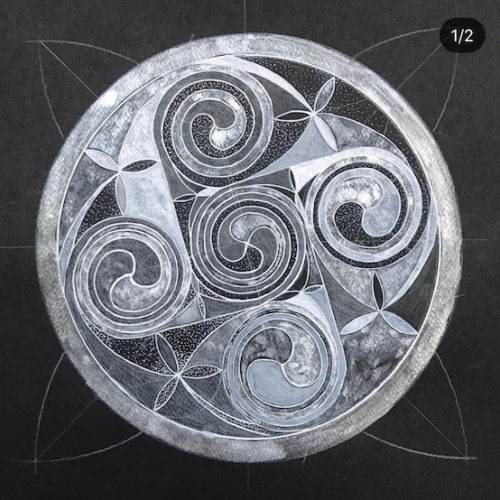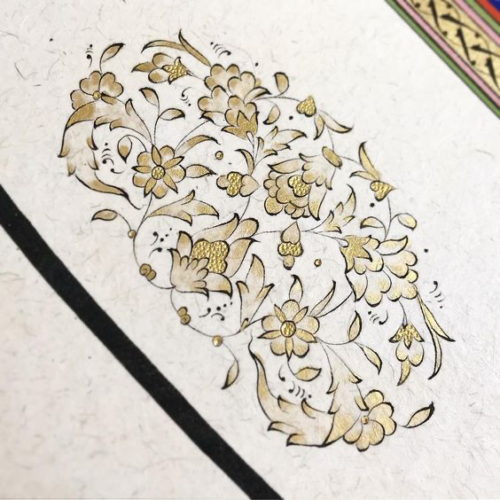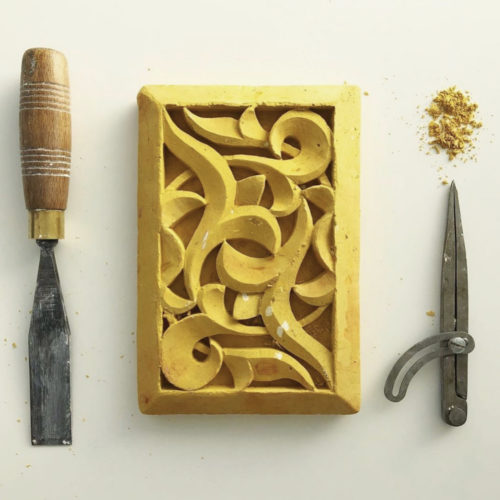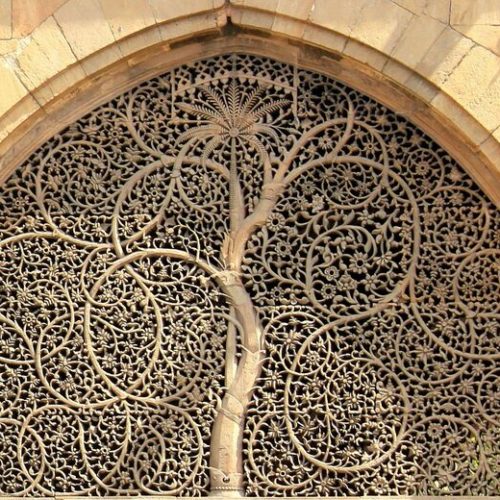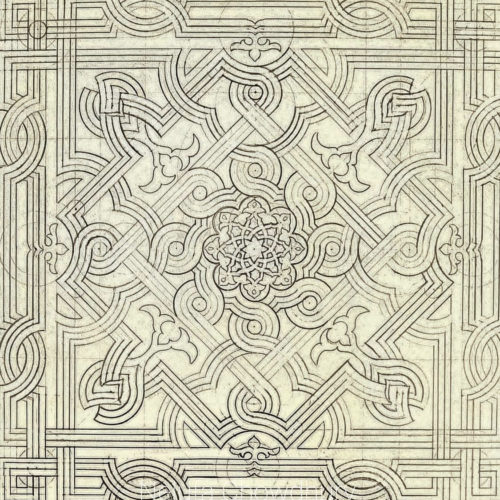This ONLINE course prepared by Adam Williamson

 We will draw two Moorish biomorphic patterns using dynamic & static square grid systems.
We will draw two Moorish biomorphic patterns using dynamic & static square grid systems.
The class will focus on the Moorish niches from the Bou Inania Madrasa (1356) Fez Morocco and spandrels from the stunning Mezquita in Córdoba, which in the height of Al-Andalus was the largest city in Europe and the leading cultural and economic centre of the Islamic world.
This method of using dynamic squares or rhombs as a device to repeat biomorphic patterns across a facade is used in plaster carvings in Morocco and Spain. When shifting away from reflecting on a vertical and horizontal axis it is harder for the viewer to see the lines of symmetry and the focus can rest on the curvilinear pattern. William Morris was inspired by this Moorish technique when drawing his beautiful wallpapers.
There is always a geometric framework that supports biomorphs, which is balanced by their cursive shapes. This partnership represents the union of structure and flow.
The act of creating biomorphic art is an example of ‘coming-to-knowing’: learning through doing, rather than thinking about it. Apprentices are expected osmose the knowledge, rather than have every detail explained in an abstract way. Often craftsmen remark that the patterns are their teachers, and corrections suggest themselves in the voice of the designs.
The act of drawing biomorphs teaches the artist to trust; working freehand and with freeforms involves engaging with chaos. Over time, the arabesque art develops muscle memory and this process becomes easier.
Moorish Stucco
Recommended Class fee, £5, £15 or £30. Please wait after making the donation to be redirected to the Registration page.
If your country doesn’t support PayPal or you have any issues please Email:
REQUIRED equipment & materials
- A compass (recommended compass is the Rotring Master Bow)
- A ruler
- Cartridge paper – A3 size ideally heavy weight (120gsm plus)
- Range of Pencils (6B-4H)
- Tracing paper
- Zero Eraser or equivalent
- Drop Bow Compass
- Optional – Coloured pencils.
- Optional – Fine line drawing pens (useful to have, but not essential)
